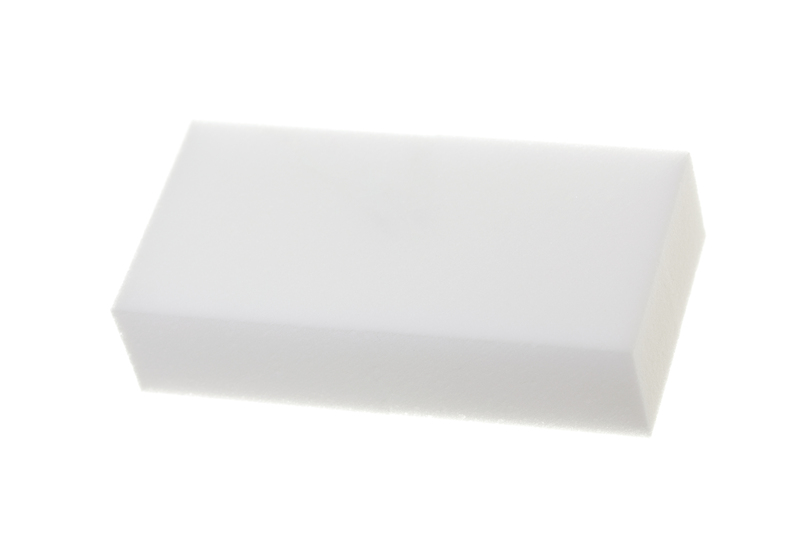Grease Out the Door: Clear-Cut Guide to Clean Enamel Oven Trays
Posted on 22/05/2025
Grease Out the Door: Clear-Cut Guide to Clean Enamel Oven Trays
If you love to bake or cook, enamel oven trays are undoubtedly your trusted companions. Over time, however, these trusty trays accumulate stubborn grease, burnt-on food, and unsightly stains -- leaving many cooks frustrated and searching for the best methods to clean enamel oven trays effectively. In this all-encompassing guide, we'll walk you through everything you need to know about removing grease from enamel baking trays, restoring their shine, and keeping them looking like new for years to come.
- Why Clean Your Enamel Oven Trays?
- Understanding Enamel-Coated Oven Trays
- Materials and Tools for Cleaning
- Step-by-Step Guide: Clean Enamel Oven Trays the Right Way
- Natural Grease Busters for Enamel Trays
- Deep Cleaning Tips for Baked-On Grease
- Essential Maintenance for Enamel Oven Trays
- FAQs: Cleaning Enamel Oven Trays
Why Clean Your Enamel Oven Trays?
Keeping your enamel oven trays free from grease isn't just about aesthetics. Regular cleaning ensures:
- Better-tasting food - Old grease or burnt residues can affect the flavour of your baked meals.
- Hygiene and safety - Built-up residue can cause unpleasant odours and be a breeding ground for bacteria.
- Longer tray lifespan - Stubborn, caked-on grease may lead to permanent marks or damage to the enamel coating.
- Efficient heating - A clean tray allows even heat distribution, helping your food cook perfectly.
Understanding Enamel-Coated Oven Trays
Before delving into cleaning techniques for enamel oven trays, it's crucial to understand their material properties:
- Durable and Non-Reactive: Enamel trays are usually metal with a glass-like, non-reactive enamel coating. They don't leach chemicals into food.
- Resistant to Rust: The enamel coating protects against rust, but chipping the surface can compromise this benefit.
- Stain-Prone: Highly pigmented foods, burnt oils, or sugar syrups can sometimes stain enamel surfaces if not promptly cleaned.
- Easy-to-Clean Surface: The glossy finish resists sticking, making grease removal easier--if you have the right method.
What NOT to Use on Enamel Oven Trays
Harsh abrasives, wire wool, or strong acidic cleaners can scratch or erode the enamel coating. Instead, opt for gentle but effective cleaning solutions, as outlined in our guide below.
Materials and Tools for Cleaning
Having the right supplies will make the process of removing stubborn grease from enamel trays so much easier. Here's your essential checklist:
- Warm water
- Dish soap (preferably degreasing)
- Soft sponge or microfiber cloth
- Baking soda
- White vinegar (distilled)
- Non-abrasive scrubbing brush
- Plastic or wooden spatula (for lifting stubborn debris)
- Old toothbrush (for corners and edges)
- Rubber gloves
Optional extras: Hydrogen peroxide, lemon juice, or a dedicated enamel-safe oven cleaner.
Step-by-Step Guide: Clean Enamel Oven Trays the Right Way
1. Tackle Loose Debris First
Before deep cleaning, gently remove any food bits using a plastic spatula or the soft side of your sponge. This prevents unnecessary scrubbing and potential scratching of the enamel surface.
2. Soak the Tray
Fill your sink with warm, soapy water and let your enamel tray sit for at least 30 minutes. This helps release burnt-on grease and softens residue for easy removal.
3. Apply a Grease-Busting Paste
- Mix 3 parts baking soda with 1 part water until you form a thick paste.
- Spread the baking soda paste generously across all greased, stained, or burnt areas of your tray.
- Allow it to sit for at least 15-30 minutes. For very stubborn baked-on grease, leave for 60 minutes or overnight for maximum effect.
4. Scrub Gently But Effectively
- Use a damp sponge, soft brush, or microfiber cloth to gently scrub the tray's surface.
- Avoid metal scourers or abrasive pads, which scratch and dull the enamel finish.
- Focus on corners, edges, and deep grooves using an old toothbrush.
5. Rinse, Inspect, and Repeat if Needed
Rinse thoroughly under warm water. If any greasy residue or stains remain, reapply your baking soda paste or try an alternative method listed below.
6. Dry and Polish
Use a clean, dry towel to pat the tray dry, or let it air dry before storing to prevent streaks or water spots.
Natural Grease Busters for Enamel Trays
If you'd rather avoid shop-bought chemicals, you'll be glad to know that powerful, eco-friendly options are already available in most homes. Here are our favourite green cleaning methods for enamel oven trays:
Lemon and Baking Soda Method
- Cut a lemon in half and dip the cut side in baking soda.
- Rub the lemon along the greased or stained areas.
- The citric acid breaks down grease, while baking soda gently lifts stains.
White Vinegar and Hot Water Soak
- Mix equal parts hot water and white vinegar in your sink or a large basin.
- Soak the tray for 60 minutes. The acidic nature of vinegar dissolves stubborn grease on enamel without causing harm.
- Follow up with a gentle scrub using your sponge or brush.
Hydrogen Peroxide and Baking Soda Paste
- Blend a small amount of hydrogen peroxide with baking soda to form a thick paste.
- Spread over burnt or greasy spots. Leave for 10-20 minutes before wiping clean.
- This method tackles especially tough stains and restores a white, glossy finish.
Deep Cleaning Tips for Baked-On Grease
Persistent, burnt-on grease and carbonized food residues can be the bane of enamel tray enthusiasts. Here's how to tackle even the most challenging baked-on grime:
- Boiling Water Bath: Place your tray in the sink, pour over boiling water, and add a few tablespoons of baking soda. Let it fizz and cool before scrubbing.
- Non-Toxic Oven Cleaner: Use an enamel-safe oven cleaner as directed. Always patch-test first and avoid prolonged contact.
- Steam Cleaning: Place a heat-proof bowl filled with water and lemon slices in your oven. Run at 150?C/300?F for 20-30 minutes. The steam softens grease, making subsequent cleaning easier.
- Baking Soda "Burn Off": If food is charred or carbonized, sprinkle baking soda directly onto cooled spots, spray with water, and heat gently in a low oven for 15 minutes. Wipe clean with a damp sponge once cooled.
Remember: Never use steel wool or scraping tools that might chip, scratch, or damage the enamel coating.
Essential Maintenance for Enamel Oven Trays
Now that you know how to remove grease from enamel oven trays effectively, keep them shining with these simple routines:
- Clean after every use: Even if the tray looks "clean," residual oils can gradually build up and harden.
- Always cool before cleaning: Plunging a hot tray into cold water may cause the enamel to crack due to thermal shock.
- Use parchment or silicone liners: Minimize direct contact with food and grease, making cleanup a breeze.
- Handle with care: Don't drop or bang your enamel tray--chips create places for rust or further residue buildup.
- Store safely: Place a kitchen towel or liner between multiple trays to avoid surface scratches.
TIP: If your tray ever does develop chips or cracks, consider replacing it to maintain the benefits of a non-stick, non-reactive baking surface.
FAQs: Cleaning Enamel Oven Trays
- How do you clean badly burned enamel oven trays?
Soak in hot soapy water, use a baking soda paste, and scrub with a non-abrasive sponge. For serious burns, the hydrogen peroxide method can help restore whiteness and remove burnt patches. - Can you use oven cleaner on enamel trays?
Only use products marked safe for enamel. Always check the manufacturer's care instructions first. - Is dishwasher cleaning safe for enamel trays?
Some trays are dishwasher-safe, but repeated high-heat cycles may weaken the enamel over several years. Hand-washing prolongs their lifespan. - What's the best way to remove grease from black enamel trays?
Both white and black enamel respond well to a baking soda and vinegar method or any of the natural options above. Prompt cleaning is best! - How do I prevent enamel trays from getting greasy?
Use liners, oil only when necessary, and clean trays soon after use to prevent buildup.
Conclusion: Enjoy Spotless Enamel Oven Trays Every Time
Scrubbing away at stuck-on grease doesn't have to be a dreaded kitchen chore. With this clear-cut guide to cleaning enamel oven trays, you now have the techniques, products, and eco-friendly alternatives to eliminate grease, restore shine, and protect your investment.
Remember: Consistency is key. Clean trays after every use, use gentle tools, and try our natural remedies for a safe and sparkling kitchen. If you found this guide helpful, share your own success stories or cleaning tips for enamel trays in the comments or with your friends. Happy baking -- with grease out the door!





